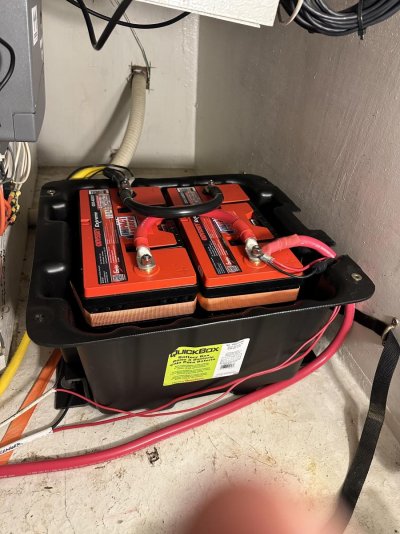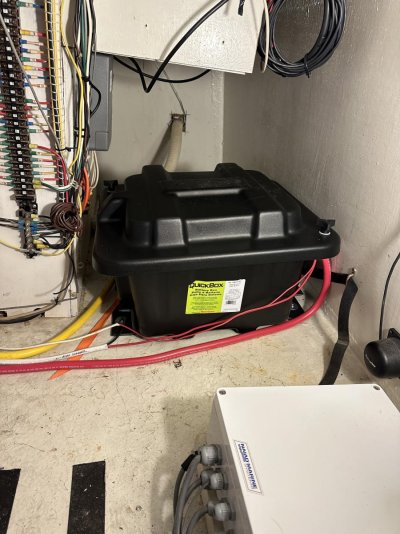angus99
Guru
I would cover the terminals in case you drop a wrench you don’t short out the batteries.
Thanks; thought I covered that:
“Also, still need terminal and fuse covers.”
I would cover the terminals in case you drop a wrench you don’t short out the batteries.
Depends on thruster and boat.
Ours, for example (Vetus BOW16024D, aka 250mm tunnel and 160 kg thrust 24VDC) specifies a minimum of 950 CCA and max of 1900 CCA. (Max may just mean beyond that, there's no additional benefit.)
For ours, Vetus suggests a minimum of two 125 Ah batteries (from among Vetus products, but maybe similar to G31s) or two 4Ds in series for the lower rating... and 4x in series/parallel for the higher rating.
Looks like Vetus recommends two 170 Ah batteries (from among their products) in series for a BOWB150. Don't see a CCA table to cross-reference from that... but maybe that'd be like two 4Ds. Or the Odyssey Extreme G31s, spec'd for serious CCAs.
-Chris
Ask me what happens when the wrench gets across the battery terminals. I have covers on all my battery but I was working on the thruster batteries so I had the covers peeled back. Huge sparks and half of the face of my adjustable wrench gone. Lots of dust around the terminals was what was left of the adjustable wrench face.
So I went with the recommendation of the ODX-AGM31 ... wired in parallel to juice up the CCAs. Quick question ... my main run to the thruster is with 3/0. No one around here carries 3/0 ... only 2/0 or 4/0. Thought 2/0 would probably be fine for a jumper. My resting voltage on shore power appears to be around 13.35 - 13.4 V. Curious what other ODX users see and what kind of drop and recovery I can expect on a ~3 sec burst.
Also, should I just beef up the jumper to 4/0? Thinking that might be better but would appreciate opinions. Thx.
PeteWhat do you need such battery power for? A single group 27 battery should do it for you.
pete
The VETUS engineer said, despite what the manual advised, that CCAs rule and AH should not be the determining factor.


